After living in Vienna for 2 years, we can say that we have seen the city from all angles and this, all year long! One could think that the richest periods in terms of activities are the summer and the winter. However, there is so much to do in Vienna that you will never get bored, whether it is in March or in October! In this article, you will mainly find activities/visits to do according to the season of your visit. To find the monuments and the “classics” to visit in Vienna, we invite you to read our article “Visit Vienna in 3 days”.
- Spring in Vienna
- Vienna in summer
- Having a drink by the Danube in Vienna
- Swimming in Vienna
- Attend the Summer Night Concert at Schönbrunn Palace
- Going to the Donauinselfest
- Enjoy the concerts at the Film Festival in front of the Rathaus
- Stroll through the Naschmarkt
- Walking in the Lainzer Tiergarten
- Go to Bratislava by bike and come back by boat
- Vienna in autumn
- Vienna in winter
- Map of Vienna by season
- When is the best time to visit Vienna?
We lived in the city of Vienna from 2011 to 2013 and have been back several times since. This article has been completely revised and updated in October 2022. If you notice any price changes or have additional information that might be relevant, please feel free to leave us a comment!
Spring in Vienna
When the weather is nice, Vienna is really a city that offers a lot of activities, whether it is outdoor or indoor activities for the grey days. Spring is the opportunity to enjoy Vienna’s must-sees, which are less frequented in March and April, and to discover the nature that comes back to life after winter.
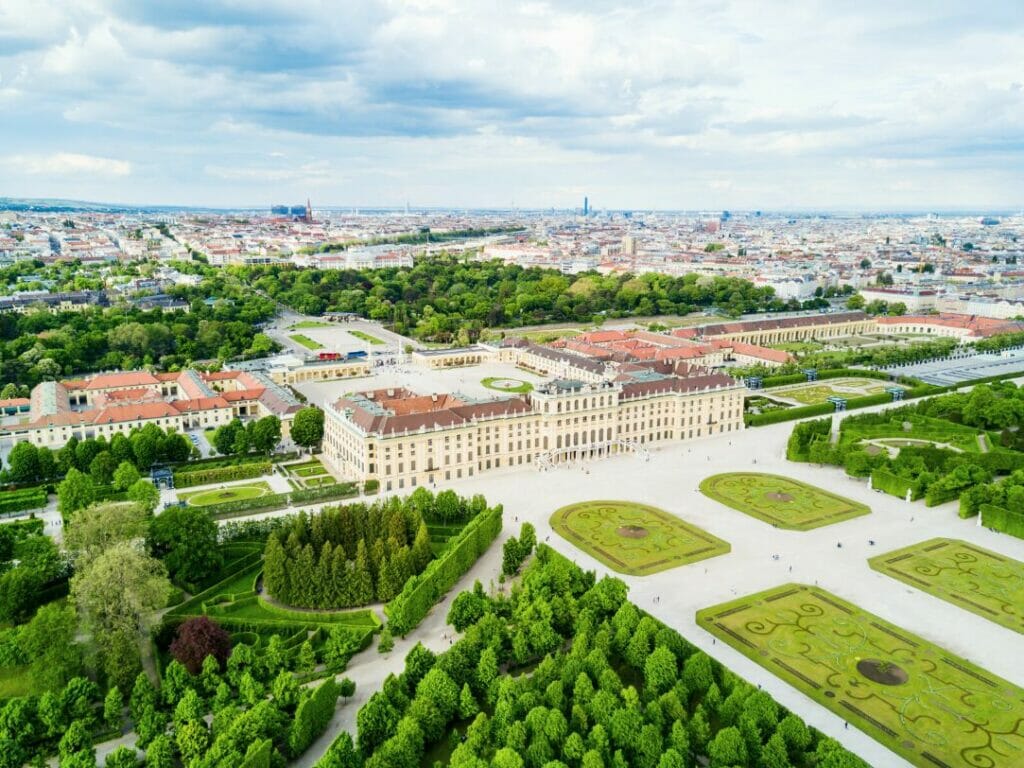
Visit Schönbrunn Palace and walk in the park
We already talked about it here, but it remains a classic of the city. Schönbrunn Palace is mostly known for having been the summer residence of Emperor Franz Joseph I and his wife, the famous Empress Sissi.
Besides the castle, which can be visited all year round, I recommend, especially in spring, strolling through the sumptuous park and gardens of the castle! At the end of winter, when the first buds start to bloom and the statues, packed for winter, start to show off their legs again, the walk along the flowering paths is really superb! By the way, I strongly advise you to climb to the top of the Gloriette to enjoy the panoramic view of the gardens, the castle and the city of Vienna.
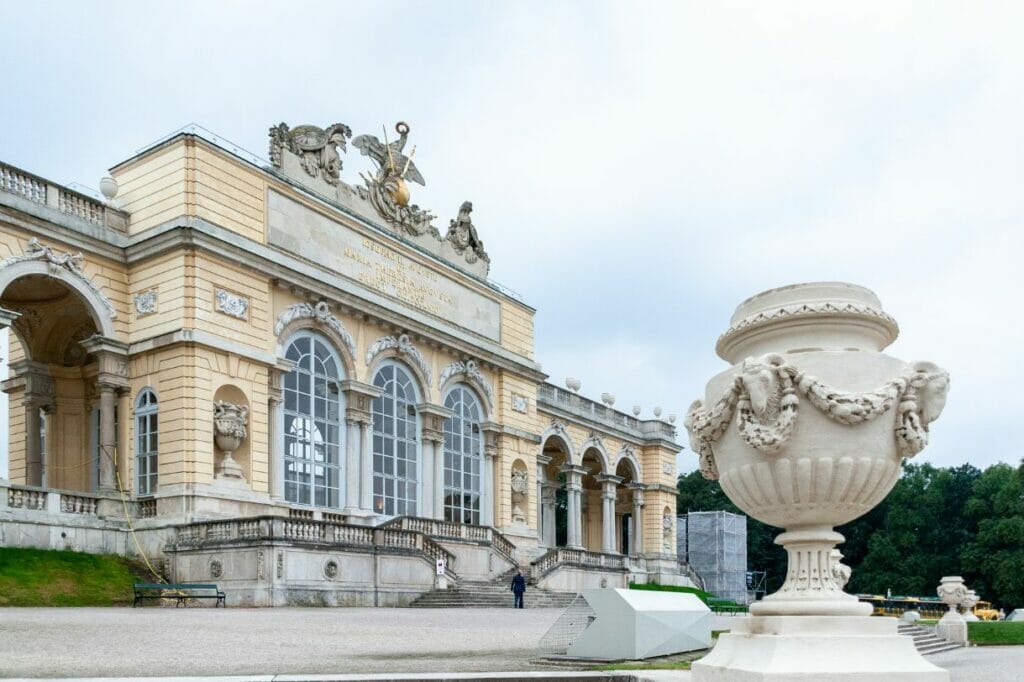
Have you considered the Vienna City Card or the Vienna Pass? To summarize, these cards offer you the possibility to travel for free by public transport throughout the city or to have discounts and/or free access to several dozens of museums and other attractions. We detail everything here about these cards which are interesting depending on the type of weekend you want to do in Vienna!
Enjoying the flowering in March and April
Speaking of the vegetation coming back to life, if you pass through Grinzing on your way down from the Kahlenberg, take the opportunity to enjoy a moment of pure tranquility at the Setagayapark. Between March and April, the cherry blossoms in this small Japanese garden are beautiful and it is an ideal place to get away from the hustle and bustle of the city and listen to the sounds of nature.
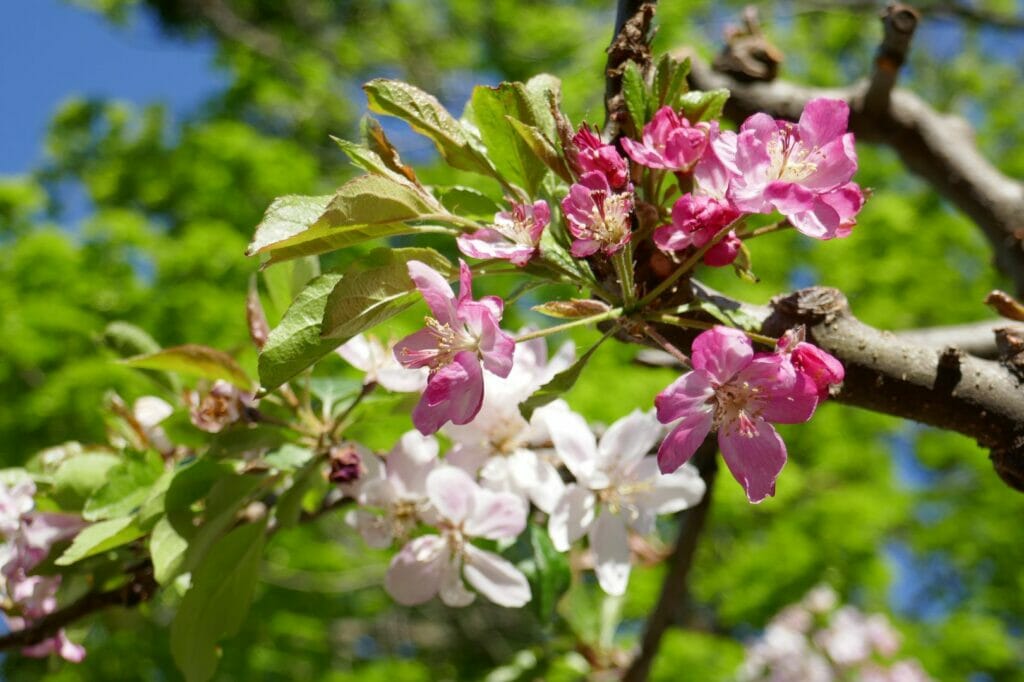
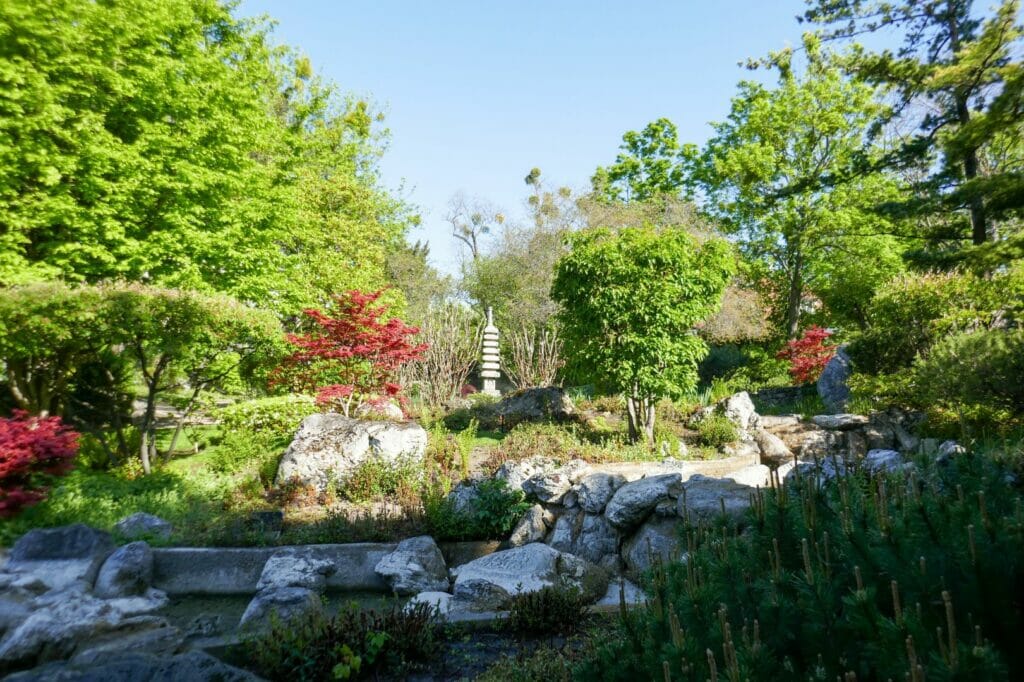
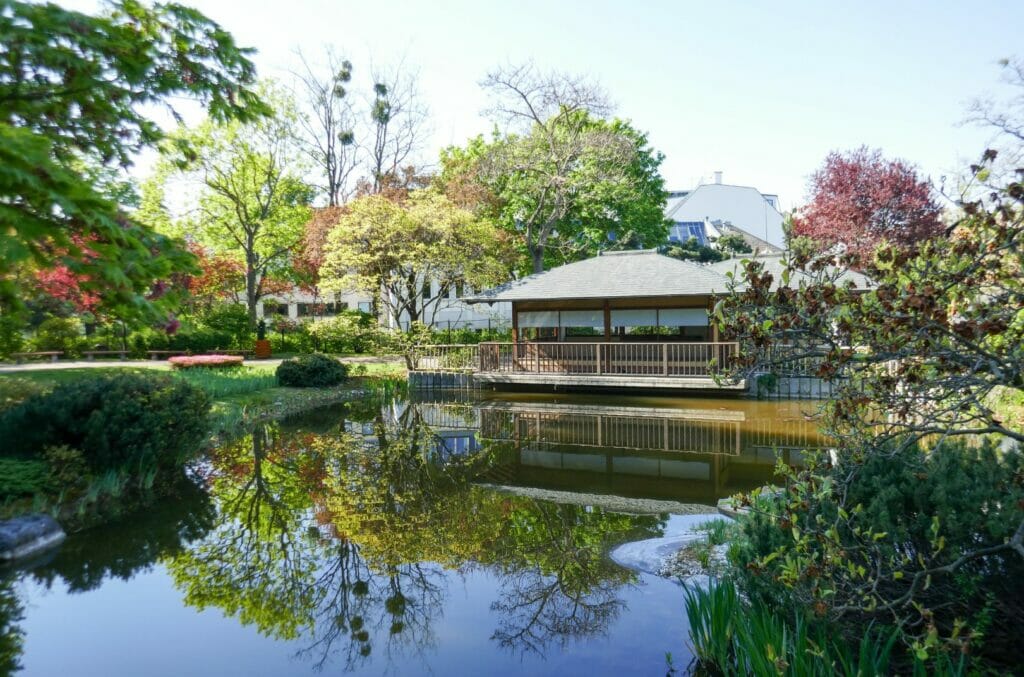
Another well-known garden to enjoy the flowering trees is Blumengärten Hirschstetten, located on the other side of the Danube. You can wander around and take in the various lush gardens, organized by theme and spread over 60,000 m2. Moreover, the entrance is free! We confess that we are fewer fanatics of the small zoo, but the garden is really worth it in spring!
The Vienna Marathon
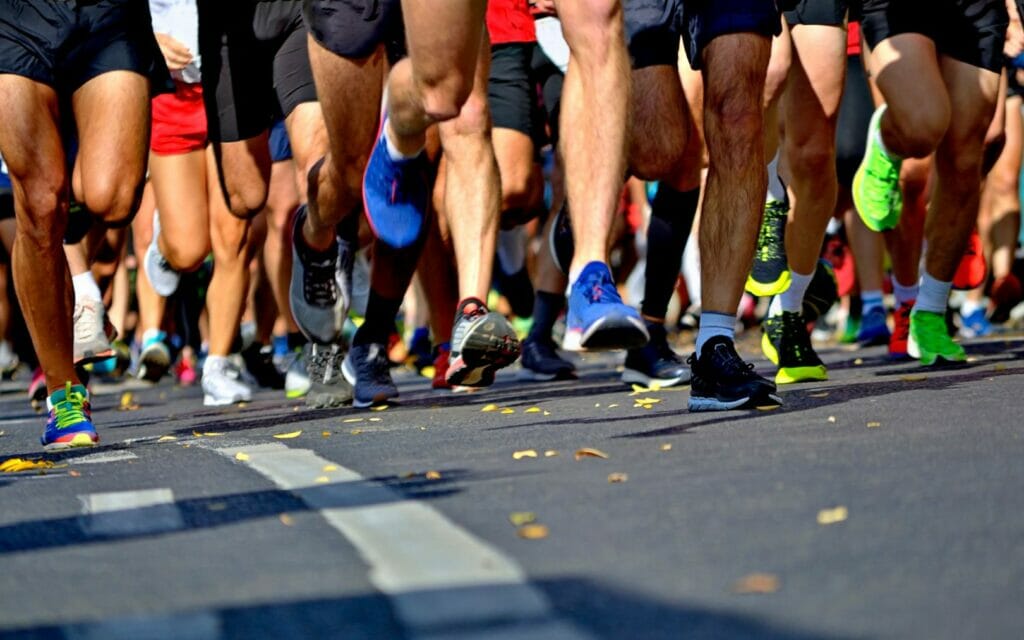
Every year, the beginning of spring also marks the season of the biggest races in Europe. Vienna is no exception to the rule and also offers its own marathon. To give you an idea, the Vienna Marathon gathers about 41 000 participants in total, all races included.
I let you admire the course below, available on the website dedicated to the Vienna Marathon. For people who like running, it is definitely a great way to discover the most beautiful areas of the city. The start is given on the Danube island, to then cross the Prater in all its length, followed by a lightning passage at Karlsplatz. Then the race takes the runners past Schönbrunn Palace and up Mariahilfestrasse (the shopping street, but not this time) to the famous Ring. Then the participants pass the Rathaus, Schottentor, and cross the Prater again. Finally, the last straight line takes the runners past the sumptuous Vienna Opera House, before the finish line in the courtyard of the Hofburg Palace. Phew!
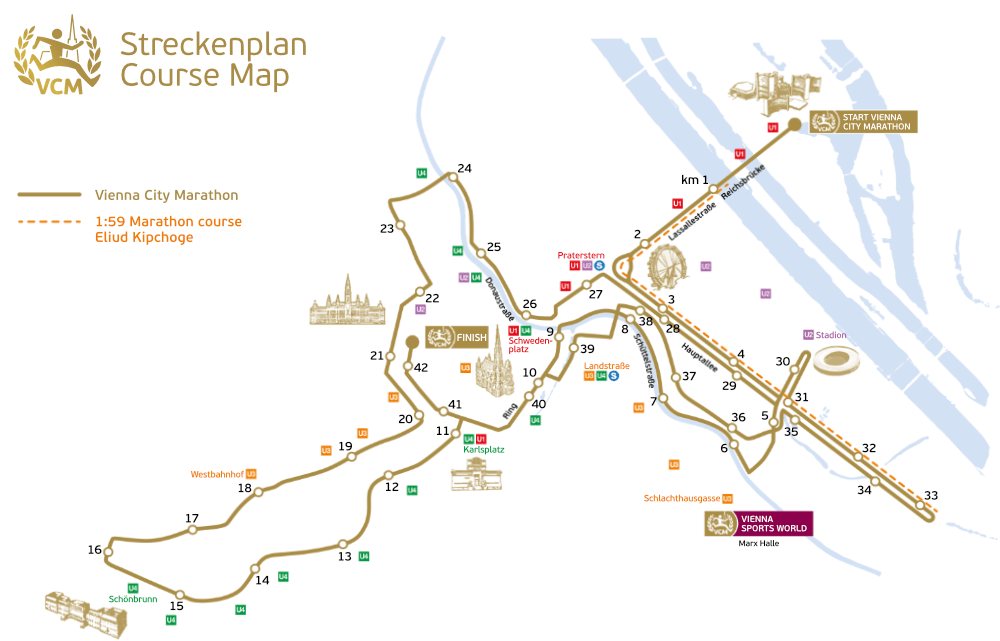
Just going through all these places in one day is not easy for a normal tourist if he takes the metro, so I don’t tell you what it’s like running! After the half marathon our first year here, Benoit ran the marathon the following year and I participated in my own way by doing the team marathon. My section of the race was “only” from Schönbrunn to the Schottentor, but for me, that was enough! Well, we admit it: it was still a great experience!
Art festivals
The nice days are back and it’s a good opportunity to stroll in several festivals dedicated to art in all its forms:
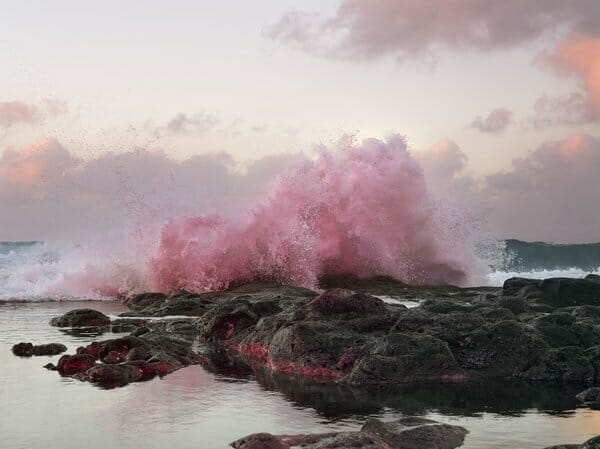
- during 3 weeks in March, the Foto Wien festival dedicated to photography is held at the Augarten studio; on the program: 2 themes for more than 140 exhibitions (beside, the photo of Inka and Niclas Lindergård on the event’s website);
- between May and June, the Wiener Festwochen, or Vienna Festival, is dedicated to theater, dance, and music. Don’t miss the free concert in front of the Rathaus to open the festival!
Easter markets in Vienna
Vienna is well known for its Christmas markets but did you know about its Easter markets? From the end of March-beginning of April, Vienna is adorned with beautiful and colorful stands offering Easter crafts, animations, gourmet specialties… The most popular Easter markets are located at Schönbrunn Palace, Freyung, and Am Hof, not to forget the Prater!
We have to admit, we missed this event. To find out more about this lovely tradition, we recommend the article by Sarah.
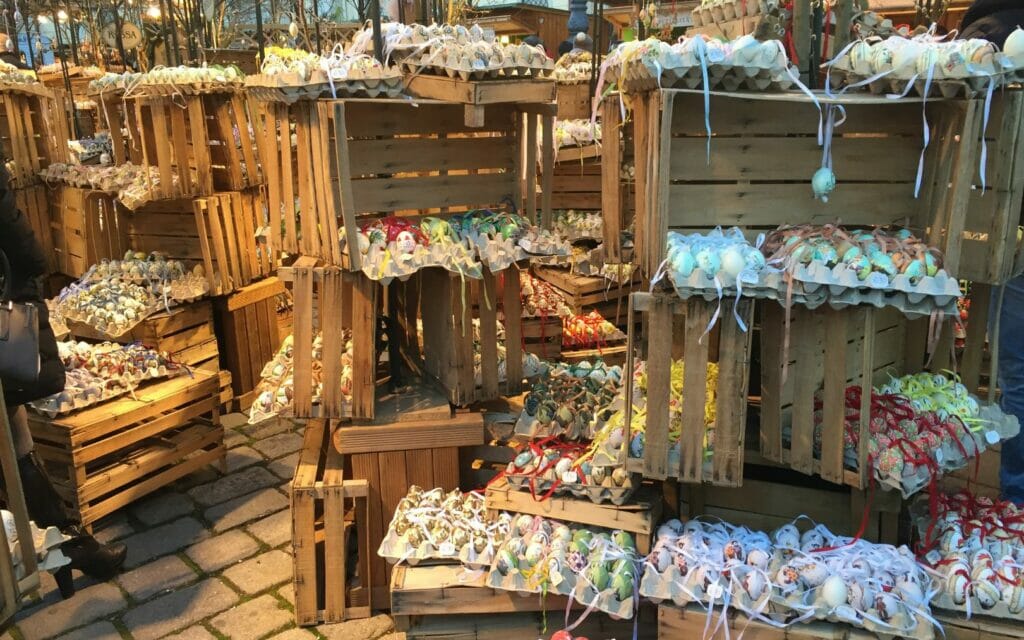
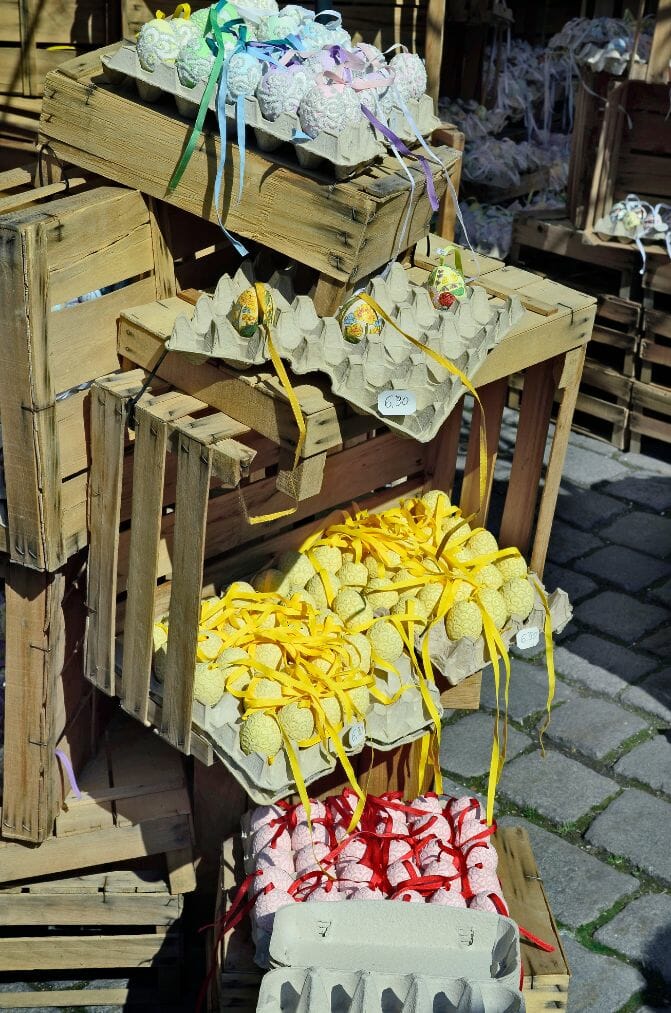
Take a wine tour in Pillichsdorf
We discovered this small village north of Vienna this year during the Kellergassenfest. Keller means cellars, Gasse means street and Fest means party. As you can see, this small village of barely 1000 inhabitants has its main street, the “cellar street”. This street is aptly named, as about ten winegrowers have their cellars there.
During the Pillichsdorfer Kellergassenfest, which takes place in April and September, the whole street is in celebration! Each winegrower sets up tables and chairs in front of his cellar, and at the entrance of the village, there is a booth where you can buy your entrance. For 12 euros, you will receive a small bracelet and a glass of wine (empty). Then, it’s time to visit the village. With your glass in hand, you go from cellar to cellar with the possibility to taste many wines.
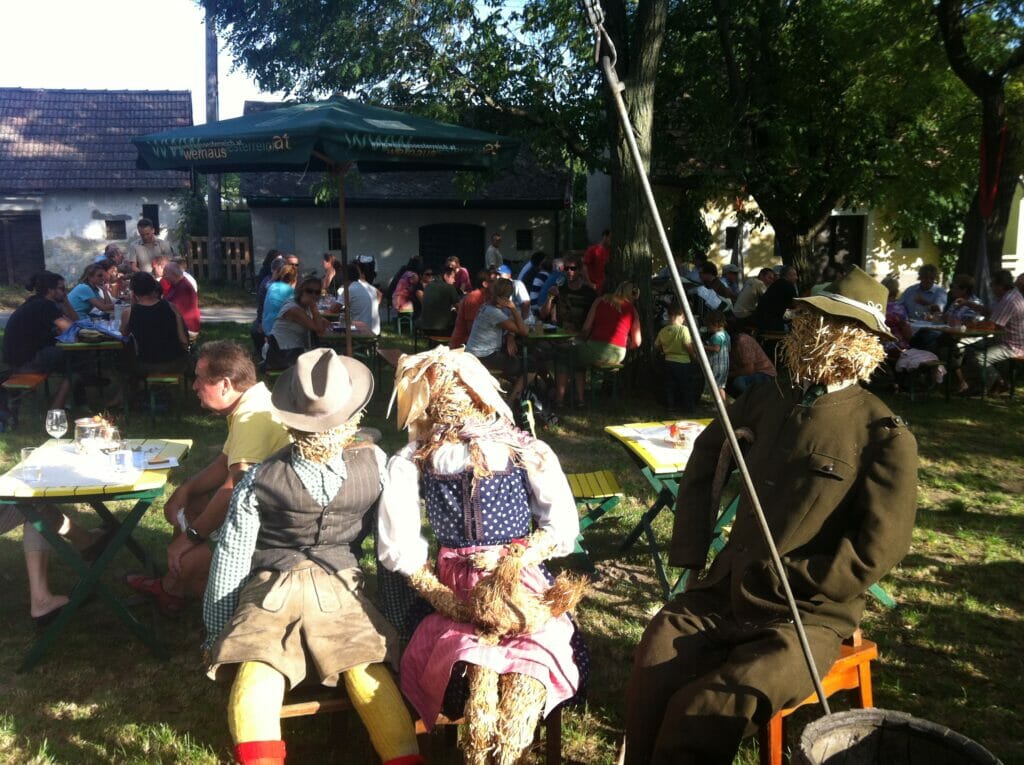
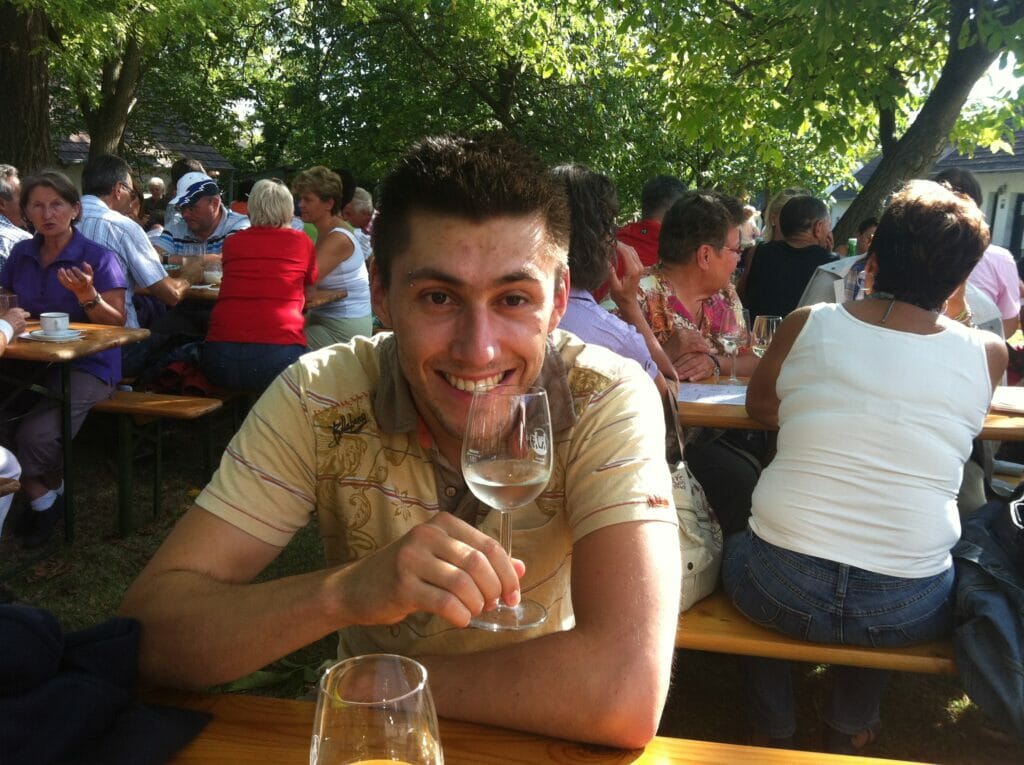
Forget about the wine-tasting concepts you may have read in wine magazines! In Pillichsdorf, there is no spittoon, and the glasses served are not tasting samples but 1/8 or Achtel (in Austria, wine is not served by the dl, but by the 1/8, i.e. 1.25 dl). This festival takes place over a whole weekend and offers a nice atmosphere: musicians, people in traditional Austrian clothes also called Dirndl, and of course, the nectar of Bacchus flowing freely.
The Taste Festival in Vienna
Besides being an important cultural capital, Vienna is also a city where gastronomy is king. In May, more than 100 Austrian producers meet at the Taste Festival (Genuss-Festival), in the city’s Stadtpark. If you are just passing through Vienna, this can be a good way to discover (and enjoy more or less moderately) other Austrian food specialties!
To stay in Vienna at a lower cost, we recommend:
- youth hostels: there are really many in Vienna but our favorites are: Hostel Ruthensteiner Vienna, Wombat’s City Hostel Vienna Naschmarkt , and Boutique Hostel Vienna;
- hotels and apartments: this is often the most expensive option but you get the service or convenience that goes with it. An apartment can sometimes be more interesting financially if you travel with several people or then save on the restaurants during your stay (avoid the overdose of Schnitzel 😉). Regarding the area, prefer the city center or then near the street dedicated to shopping, Mariahilfer Strasse. To find a hotel or apartment in Vienna at the best price, go to Booking.
Vienna in summer
The sun is more and more present, the tourists are flocking: no doubt, it’s summer! For the little Swiss that we are, we were not really used to temperatures that regularly exceed 30°C. But it is really frequent between June and August in Vienna. Well, that’s all well and good, but what do you do when the thermometer goes crazy? One thing is sure: you have plenty of choices!
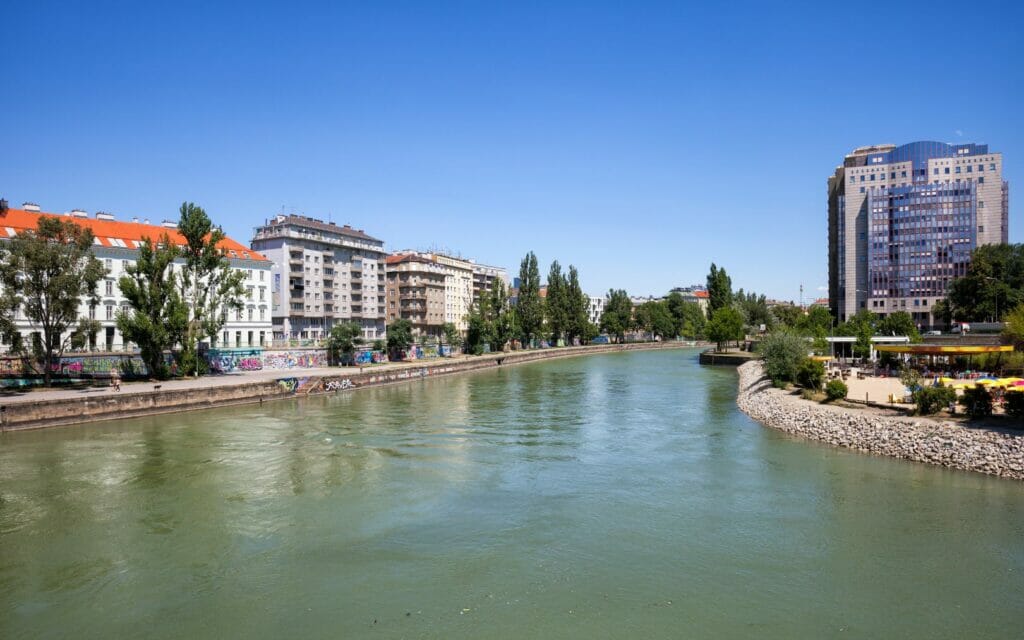
Having a drink by the Danube in Vienna
Like Paris Plage, Vienna also has its own little promenade along the Danube canal where you can find terraces with sand and ice cream shops. As much as for swimming, I really don’t recommend the canal (it’s forbidden anyway) which passes through the center, as much as for having a drink in the early evening and sliding your feet in the sand heated by the sun, there is nothing like it!
If the prospect of drinking a cocktail with your feet in the sand doesn’t interest you more than that, you can also cross the Danube Canal and go to the branches of the river called the New Danube and the Old Danube. There you will also find many small beach restaurants but also fishermen’s restaurants serving fresh fish.
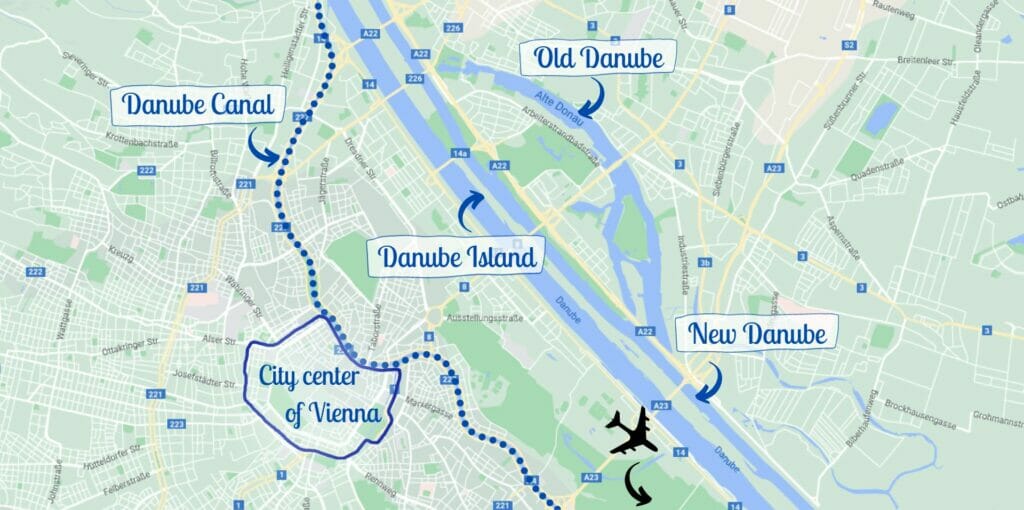
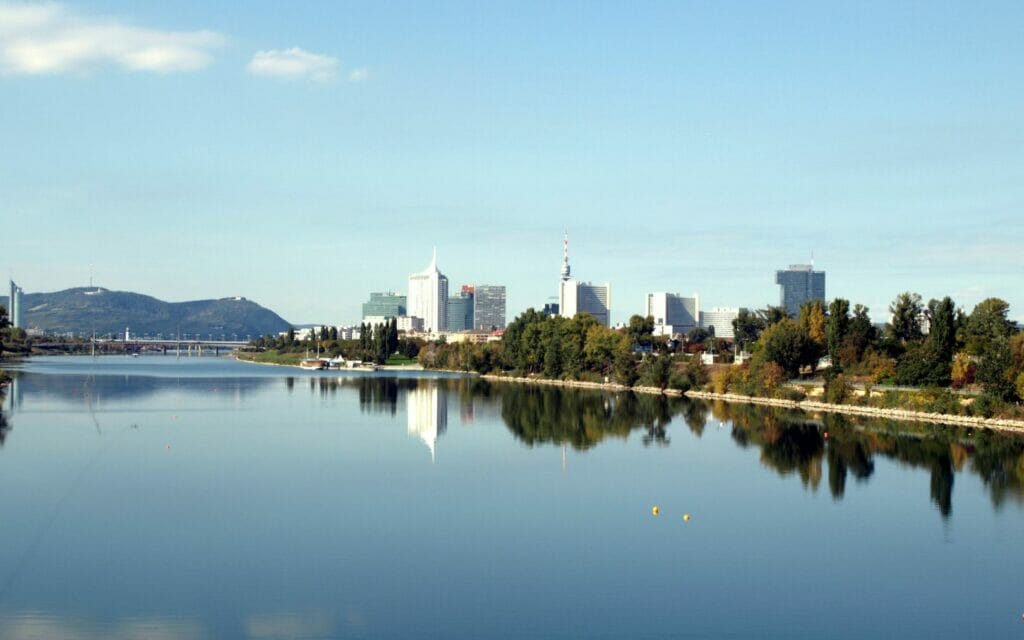
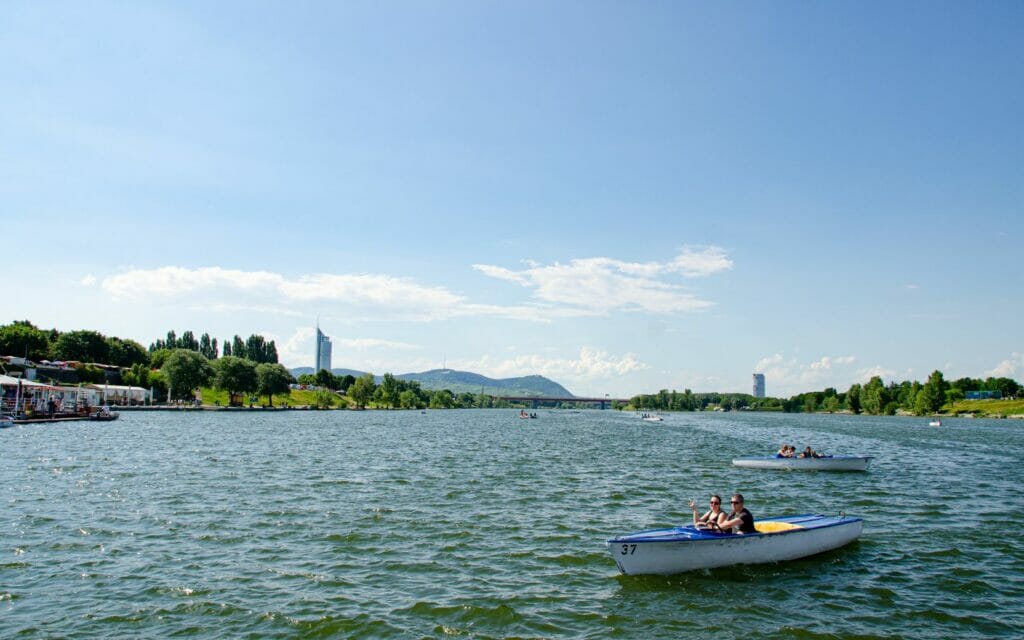
Swimming in Vienna
For a swim in Vienna, there are many possibilities! My little preference goes to the Donauinsel, the Danube island. This island is actually artificial and was created in the first place to channel a little better the flow of the Danube and to avoid the flooding of the city.
In any case, this island does not give at any time the impression of having been created by man! 21 km long with a width that varies between 70 and 210 meters, it is a paradise for swimmers, and walkers as well as for bicycle and rollerblade lovers! It is definitely a great option to get away from the stifling heat of the city center!
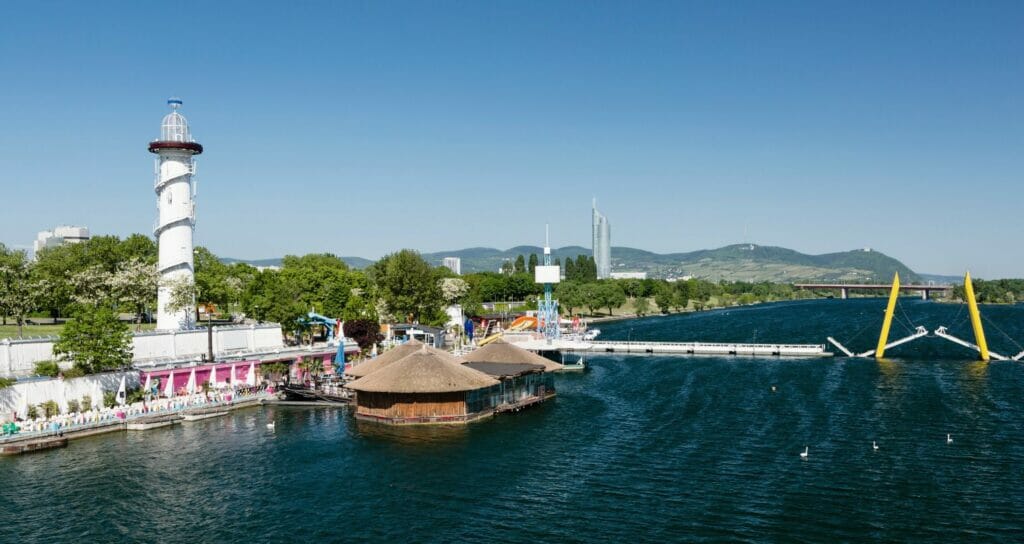
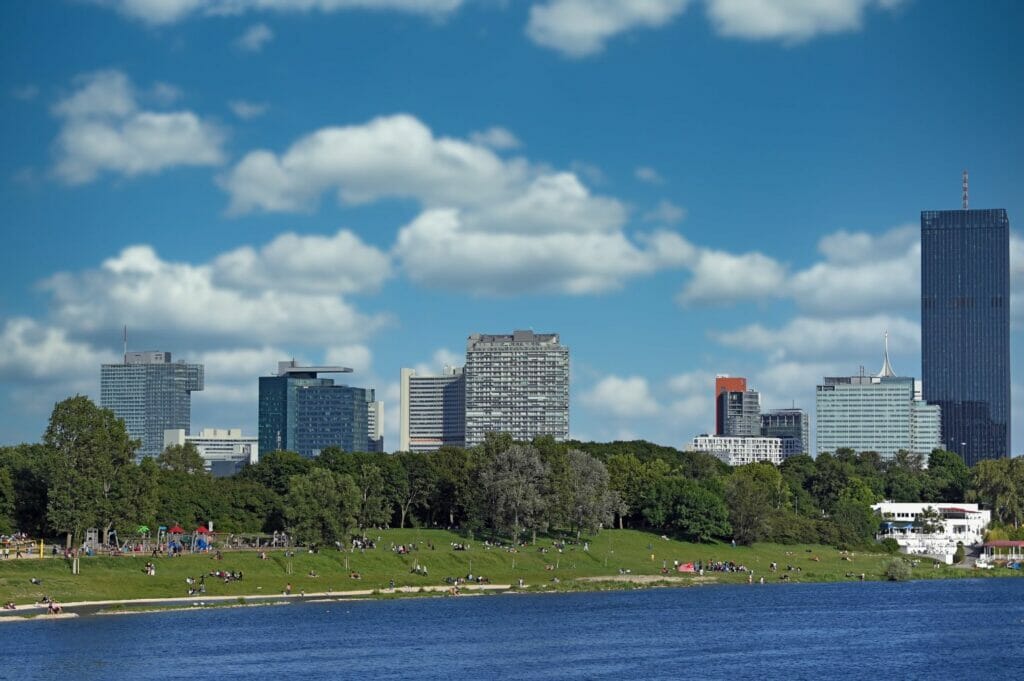
The Old Danube also offers a lot of nice spots for relaxing and swimming:
- Lagerwiese Romaplatz, a large green space lined with sand to enjoy the crystal clear waters of this part of the river;
- Gänsehäufel, the small island at the southern end of the Old Danube is a small paradise in crystal clear water. It is not free (5 euros per adult) but offers several pools and fields to practice all kinds of sports.
Here is one last place to swim, even less crowded than the Old Danube: it’s the Wienerbergteich lake, east of Vienna (streetcar line 11). We used to go there to walk my dog, but you can also swim, jog, bike or just enjoy the quietness!
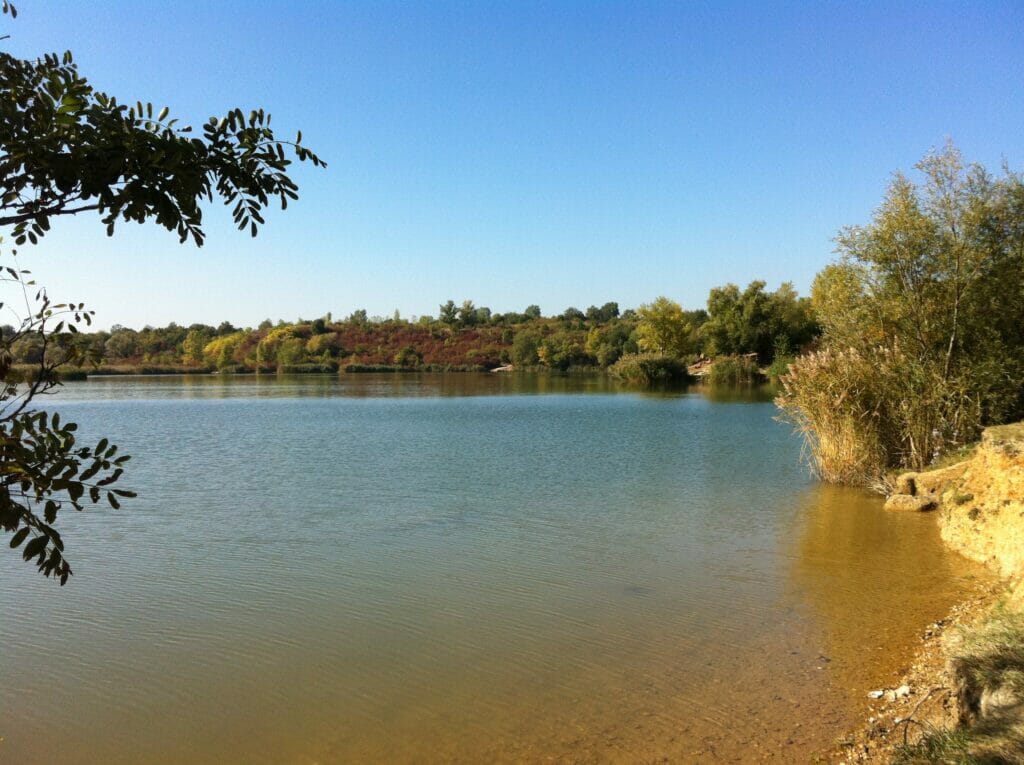
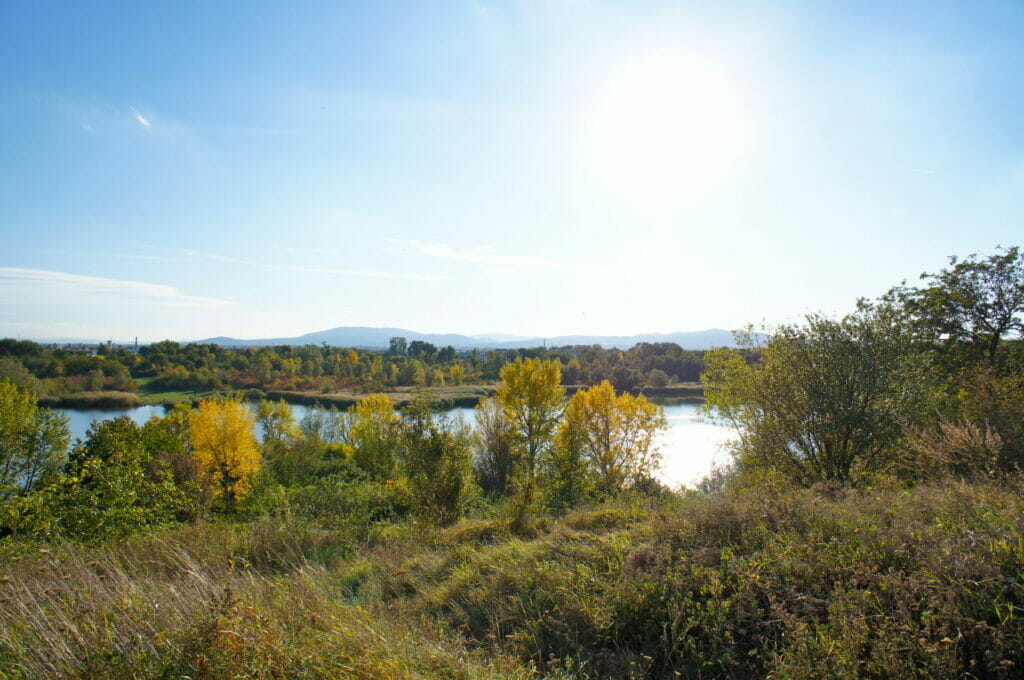
Attend the Summer Night Concert at Schönbrunn Palace
In the magnificent setting of Sissi’s palace, come to the Sommernachtskonzert, otherwise known as the Summer Night Concert, in early June. In the baroque gardens, you will attend the concert given by the Vienna Philharmonic Orchestra with Schönbrunn Palace illuminated with a thousand lights in the background! Admission is free.
Going to the Donauinselfest
Are you visiting Vienna at the end of June? Take advantage of the free festival on the Danube island, the Donauinselfest, for 3 days of music. Local and international artists perform on 11 stages for 600 hours of live music. As a result, no less than 2.5 million people visited the island during this event!
Enjoy the concerts at the Film Festival in front of the Rathaus
Every summer, the unmissable Film Festival takes place on the Rathausplatz for 2 months to celebrate not the cinema, but the music. Every evening between July and September, mythical concerts are broadcasted on a big screen. In terms of style, there is something for everyone! For the last edition, the eclectic program went from Queen to Mozart, Amy Winehouse, John Williams, and musicals! The entrance is free. Between two titles, you can eat thanks to the world cuisine proposed on the 22 stands. Good music and good food in front of the pretty Rathaus, what else 😉?
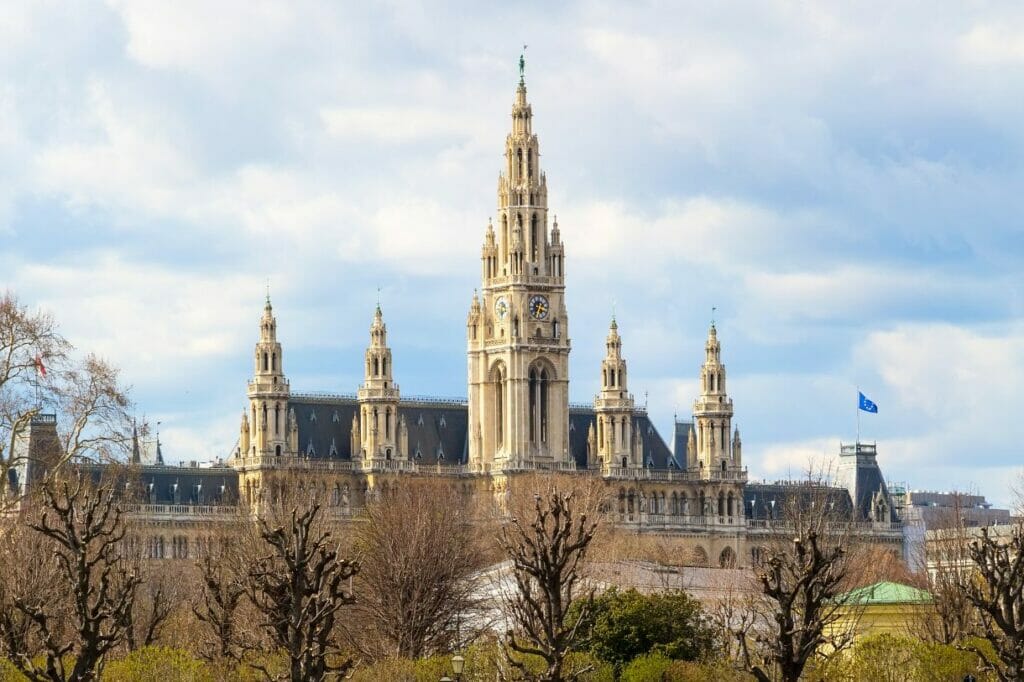
Stroll through the Naschmarkt
We already told you about it in the article about our favorite restaurants: if you’re feeling peckish or just want to work up an appetite, then a quick trip to the Naschmarkt is a must. This market is almost 1.5 km long and is the oldest in the city. Its first traces in history date back to the 16th century! Today, it has simply become the favorite meeting place of the Viennese for a small morning brunch or a small drink in the evening on a terrace in one of the many restaurants installed in the market. We love this place because it is one of the few places that subtly mixes the flood of tourists and the locals!
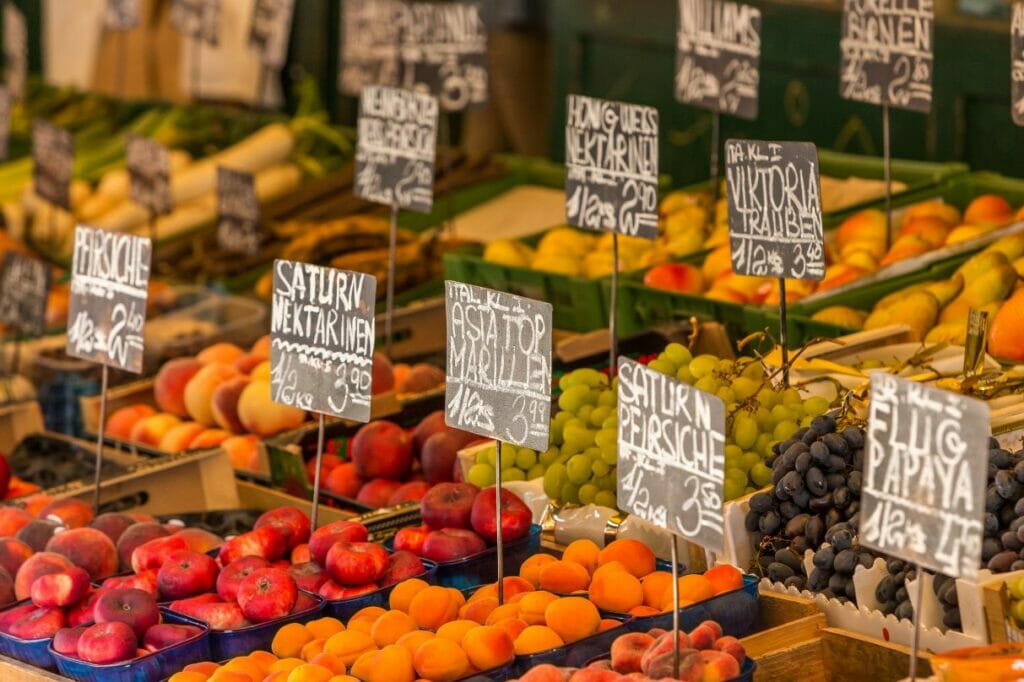
Walking in the Lainzer Tiergarten
If during your stay you feel like stretching your legs a bit, then we can only recommend a walk in the Lainzer Tiergarten in Vienna. This green space located at the end of the U4 subway line is a place of relaxation of almost 24 km2 where nature has been completely preserved. The park was founded in 1561 and was originally a private hunting ground for the relatives of Emperor Ferdinand. Nowadays, there are still about 800 warthogs, 300 hinds, and 700 mouflons living there in total freedom. The park is mainly on a slope, which means that you will also have some opportunities to have a nice viewpoint to admire Vienna from above! Take advantage of it, it’s completely free 😉.
Go to Bratislava by bike and come back by boat
Another very nice activity to do if you don’t mind working your little calves a bit is to take advantage of the nice days to rent a bike and go to Bratislava along the Danube. In total, you will have to ride 67 km to reach the Slovak capital. For the return trip, you can rest on the bus or the train that will bring you back to Vienna in a little more than 1 hour for a ticket from 5 to 11 euros. Some boats make a small cruise on the Danube to join the two cities, but it is not cheap (from 40 euros for an adult). And, basically, we prefer the bus and the train as “greener” means of transportation compared to the boat…
Vienna in autumn
Fall is a season that I really enjoy! Especially since in Vienna you really feel the change of season… The beginning of autumn is usually marked by the traditional Indian summer. In September and even at the beginning of October, it is not uncommon to have temperatures of 20°C. From mid-October, Vienna tends to be covered by a light fog, the trees all take on a golden color and the temperature starts to drop.
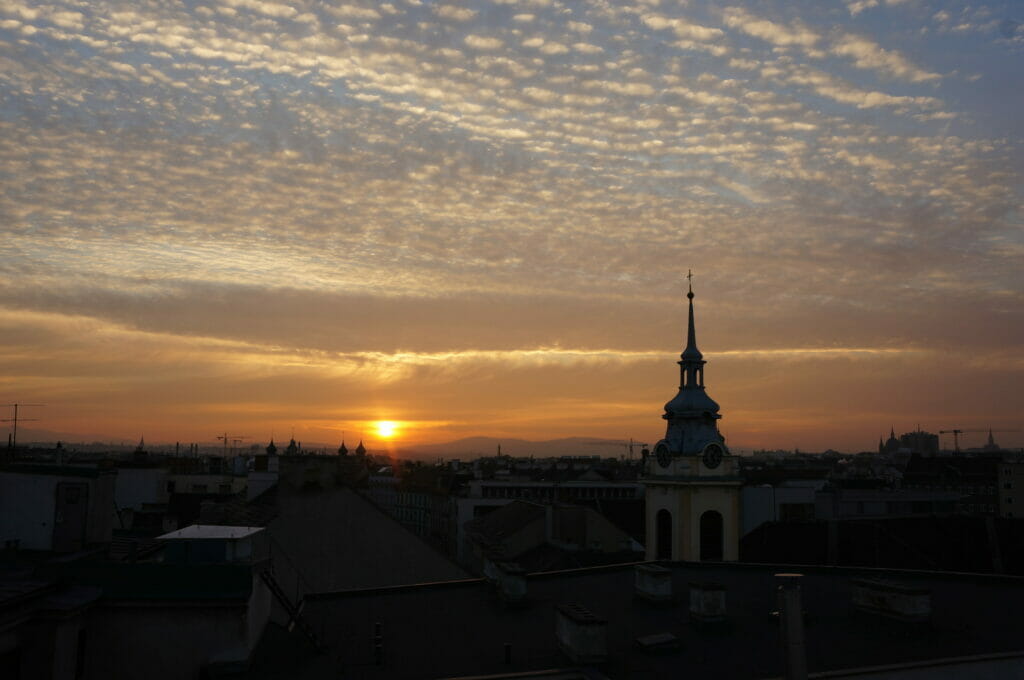
From mid-November, we can say that winter is well-established. But temperatures rarely fall below 0°C at this time. In theory, it rains about 14 days per month in autumn in Vienna, but in practice (well, in 2 years of expatriation) I would rather tell you that it really rains 2-3 days per month and that it is certainly overcast the rest of the time.
Participating in the gastronomy week in Vienna
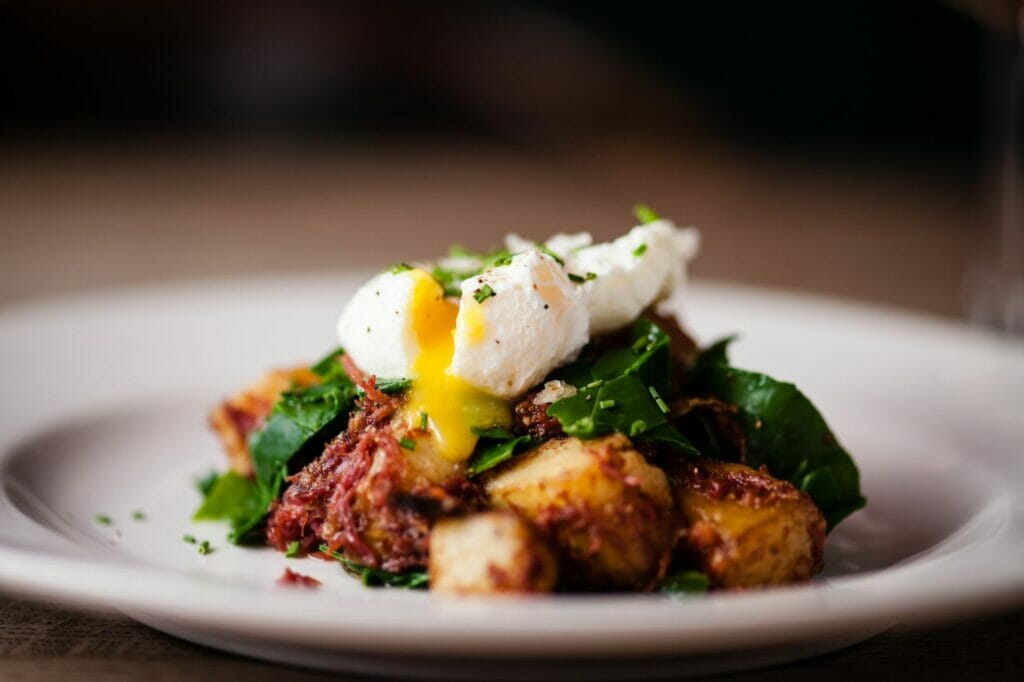
Every year, in early autumn, Vienna celebrates good food during the Wiener Restaurantwoche or the gastronomy week.
The top-of-the-range restaurants offer a fixed-price menu, starting at 34.50 euros for a three-course meal. In short, it’s a great opportunity to enjoy haute cuisine at a more reasonable price than usual! For more information and reservations, please visit the event’s website (in German only).
Enjoying the wine harvest around Vienna
For us wine enthusiasts, September and October are of course the harvest season. As Austria is a wine-producing country, you can imagine that the region of Vienna is no exception to the rule.
In addition to the Pillichsdorfer Kellergassenfest that we mentioned earlier, there are many other possibilities for wine lovers in the Vienna area. Here are 3 nice little excursions within an hour of the Austrian capital.
Kahlenberg and Grinzing
The Viennese will tend to call the Kahlenberg, the Vienna Mountain. From our Swiss point of view, used to the Alps, we would rather call it the Viennese hill. Located just a stone’s throw from the city, this “mountain” offers a perfect opportunity for a nature getaway in less than half an hour by transport from the heart of Vienna.
Our favorite walk is to reach the top of the Kahlenberg by metro or on foot. From there, you can admire the view of the city and then walk back down to Heiligenstadt. The walk will lead to the very nice village of Grinzing, where you will find many different Heuriger (typical Austrian taverns) where you can enjoy a good glass of wine from the vineyards you passed through during your walk!
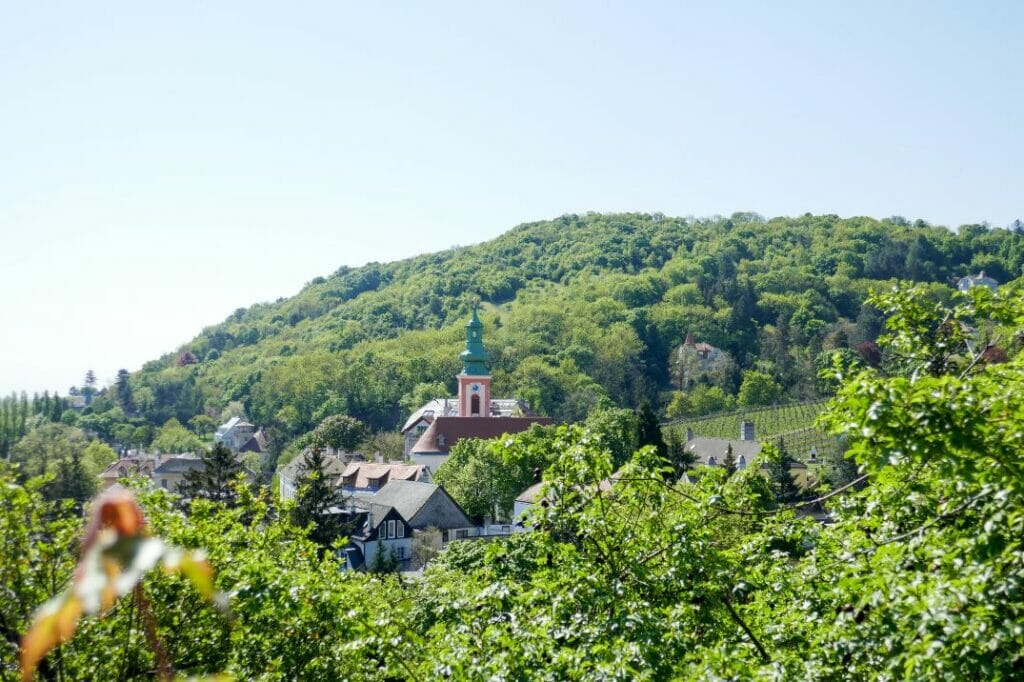
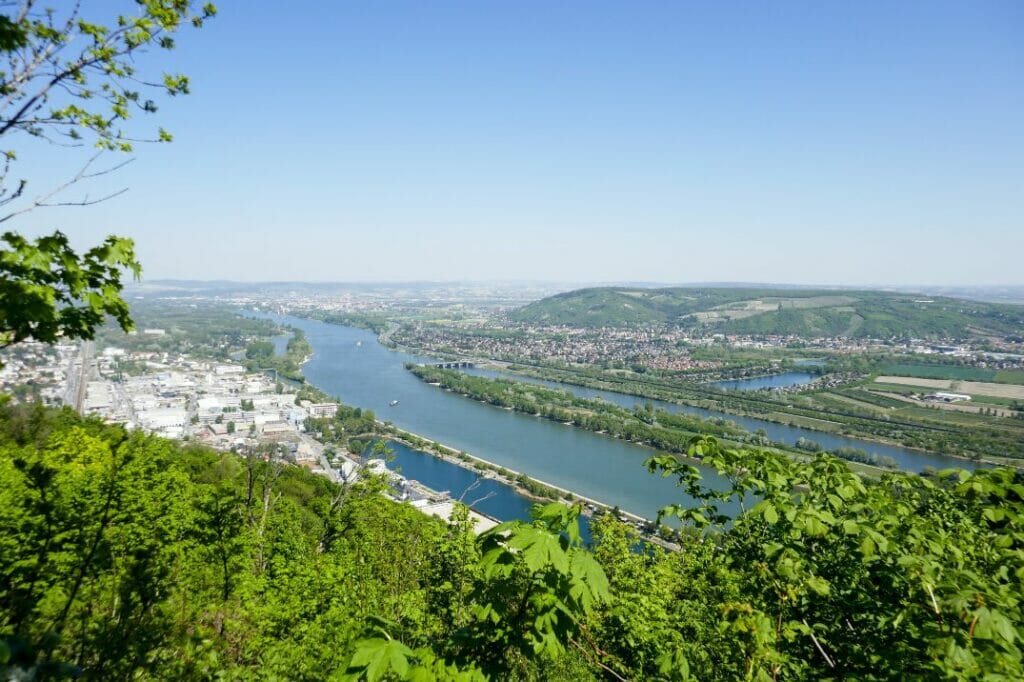
Wine hike in the east of Vienna
In the same spirit as the Pillichsdorf festival that we mentioned in the spring, the Wiener Weinwandertag is held, in other words, the Vienna Wine Hiking Day (in reality, the event is spread over a weekend). At the end of September, several hundred Viennese take to the dedicated trails (between 2.5 and 10 km) to taste the different grape varieties while hiking and enjoying the views! The Wiener Weinwandertag is friendly and can be worth it if you like hiking (and wine of course 😉). Find the different routes on the Vienna tourist info website.
Between Baden and Gumpoldskirchen
Another very cool activity to do around Vienna on the theme of wine is the walk between Baden and Gumpoldskirchen. It will lead you along the vineyards with a very nice view of the vineyards.
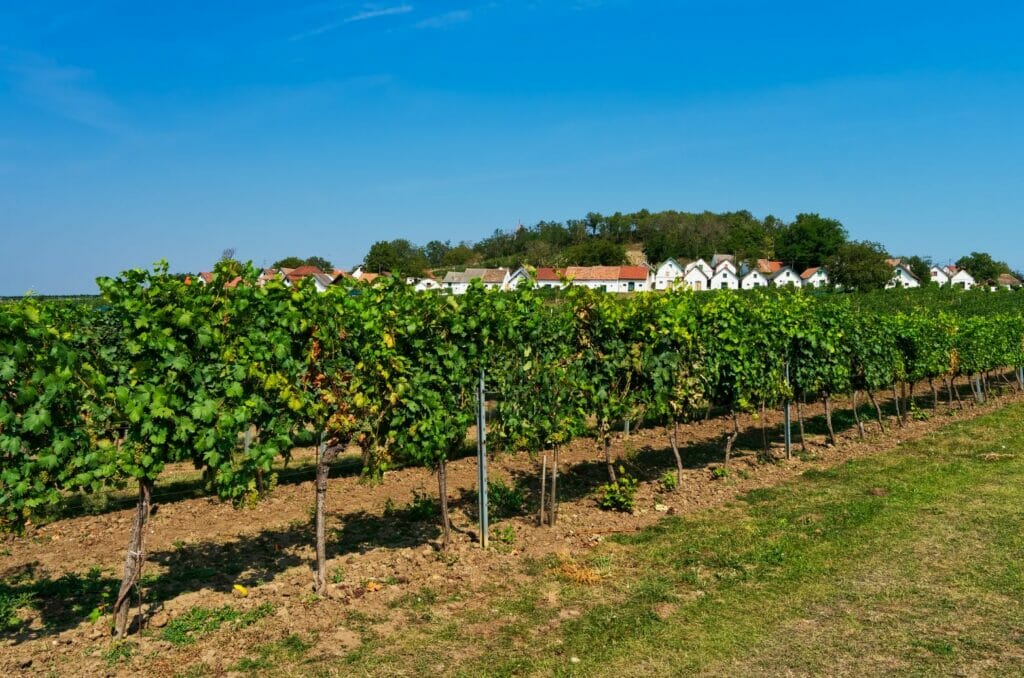
We opted for this little walk during one of the weekends of the Genussmeile, which means the kilometer of flavors. Every year, for two weeks, the winegrowers set up stands in their vineyards to allow walkers to taste their wines. Once you arrive in Gumpoldskirchen, you will also find many Heuriger there to fill a possible small hunger after the walk 😉.
Oktoberfest in Vienna
I know what you are thinking: the real Oktoberfest is in Munich, and you are right. But the Viennese are still very proud of their version, the Wiener Wiesn Fest, which takes place every year in Prater Park. At this time of the year, it’s fun to see hundreds of people in Dirndl on the streets of Vienna!
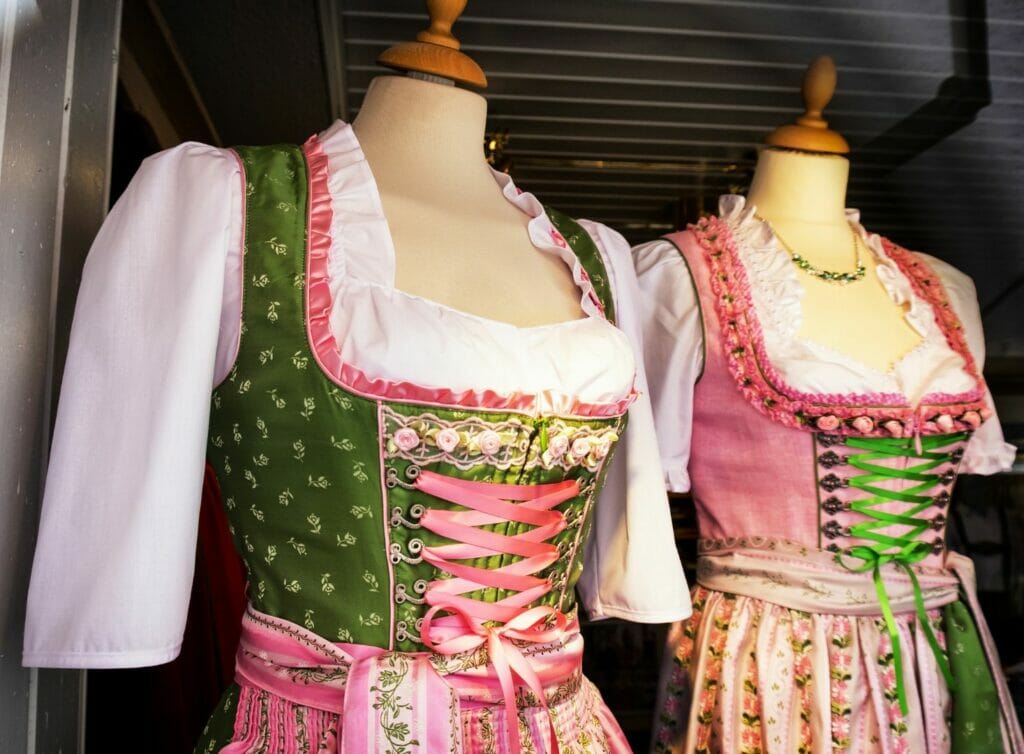
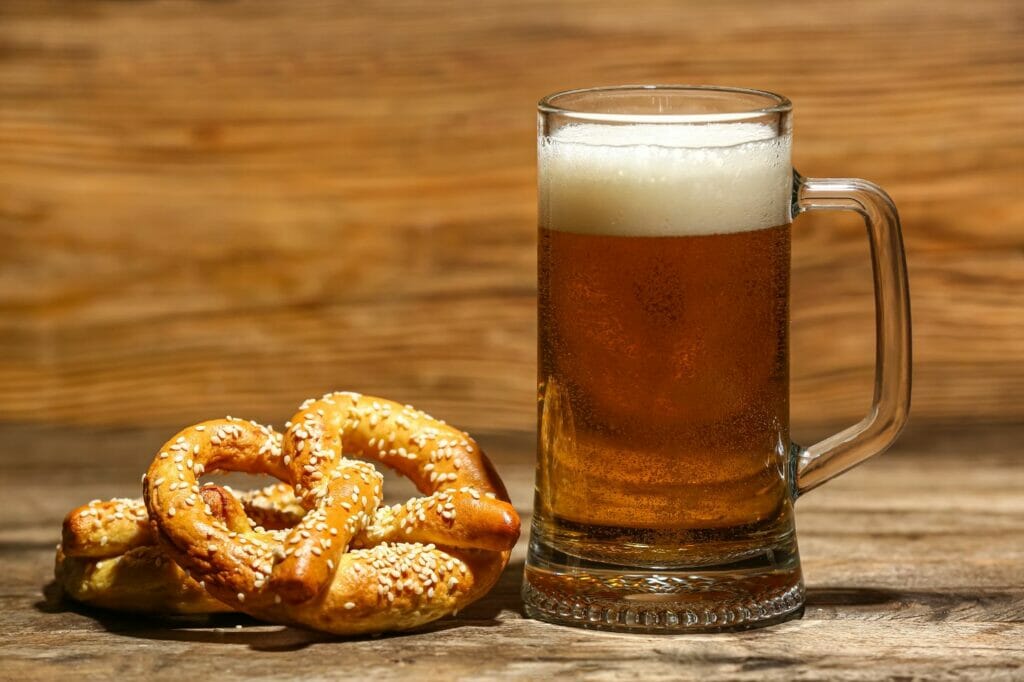
The Viennese event is based on the same concept as its Munich model: tents, big wooden tables, music, and beer of course! The entrance fee depends on the time of day and the program of the day.
Every year about 200,000 beer lovers gather under the tents on the Prater, so if you are planning to visit Vienna in October, don’t forget your suede pants and your Dirndl for the Wiener Wiesn Fest!
Vienna in winter
The months of December and January in Vienna are so full of activities that we have dedicated an entire article to them! Experience the magical atmosphere of Christmas over a glass of mulled wine!
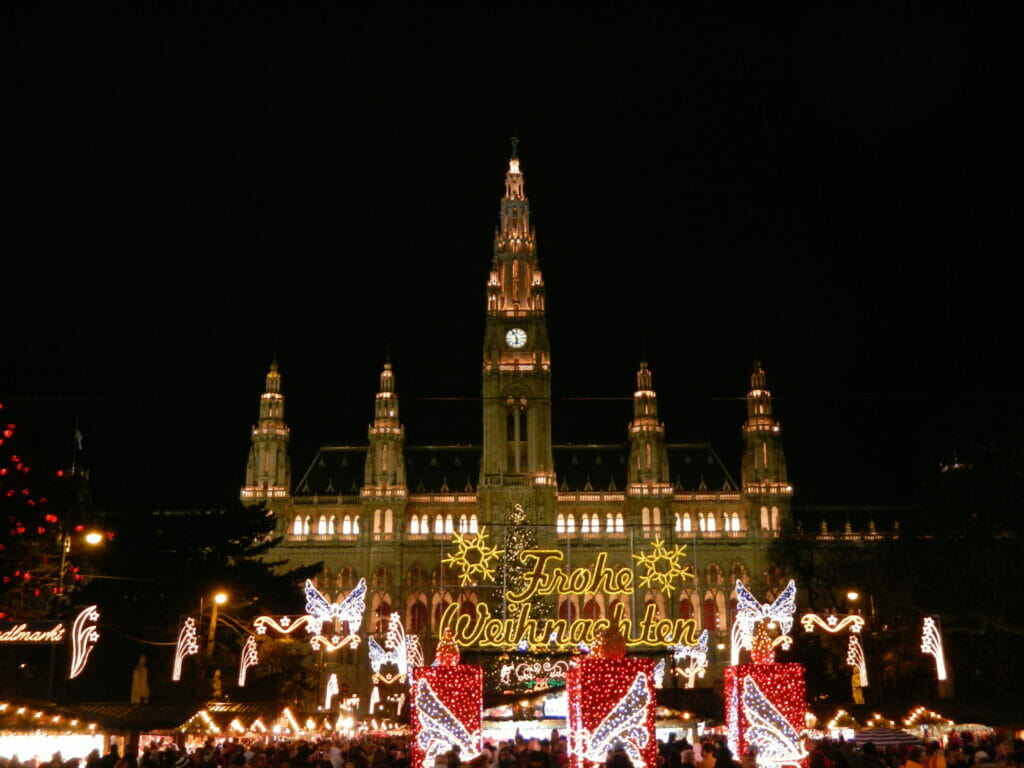
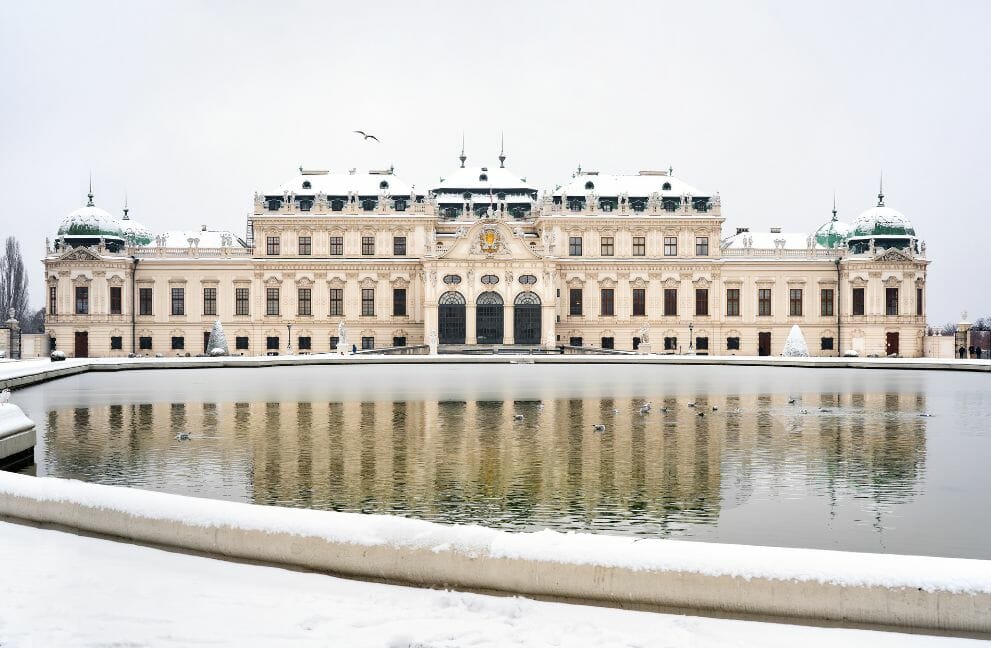
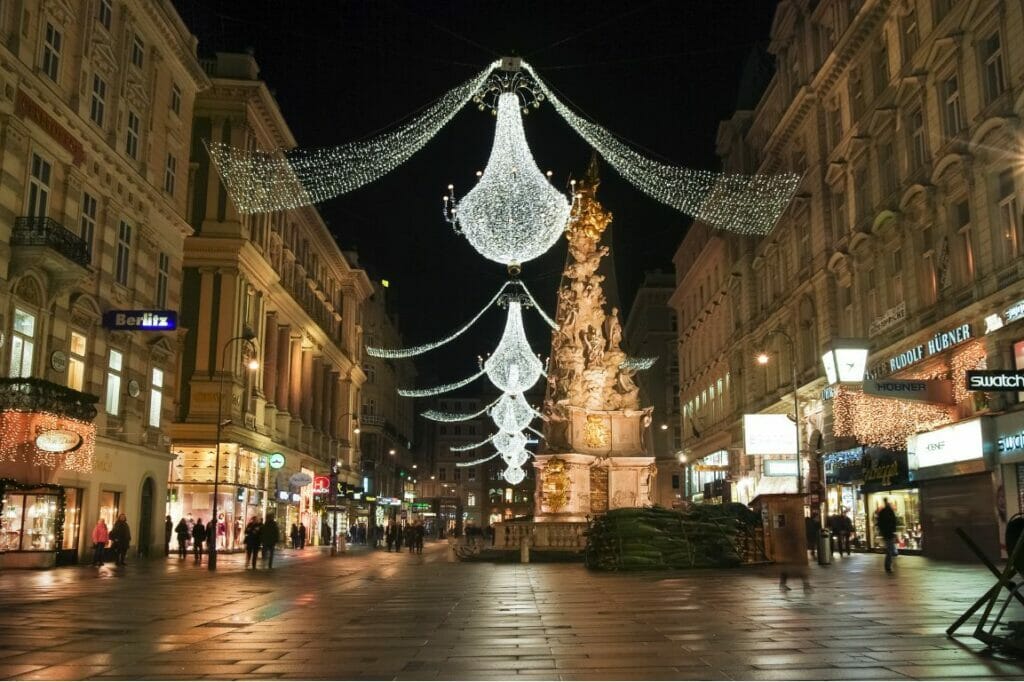
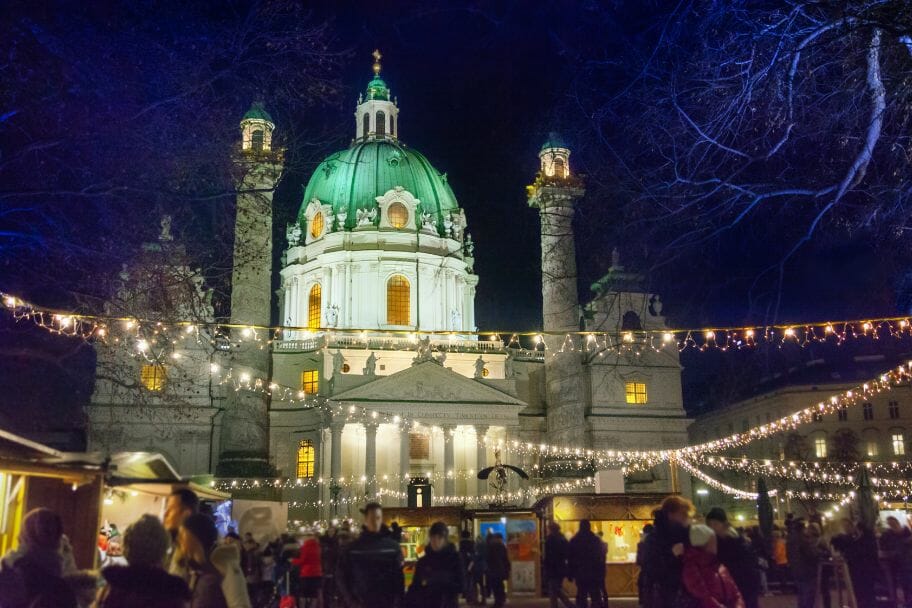
Map of Vienna by season
Finally, nothing is better than a map of Vienna according to the season! The markers are arranged by color: green in spring, yellow in summer, and orange in fall.
When is the best time to visit Vienna?
Autumn in Vienna offers wonderful possibilities. And both the period before the holidays and the beginning of autumn are full of great “seasonal” activities. For me, the only drawback might be the weather… I told you, the temperatures are mild, and the rain is not torrential, but you should know that the weather is rarely “nice” in autumn. The city is covered by a light veil of fog, and the sky is often overcast. So there are a few beautiful sunny days where you can fully enjoy the last terraces… But if you don’t want to have a beer in the sun, I can only advise you to have a good mulled wine at the corner of a street to make you feel better.
After having dissected Vienna according to the seasons, which one tempts you the most to discover the capital of Austria? 😉
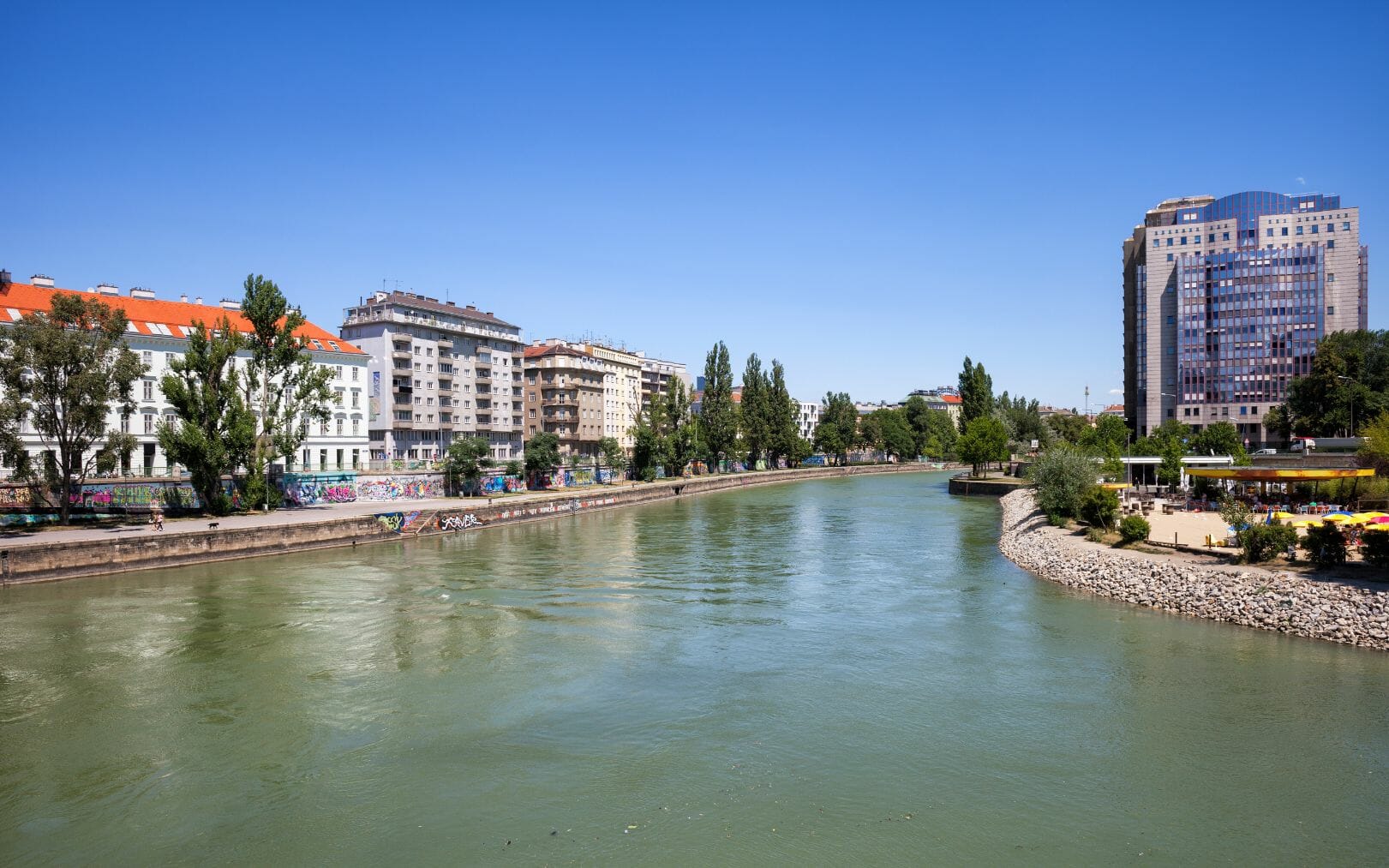
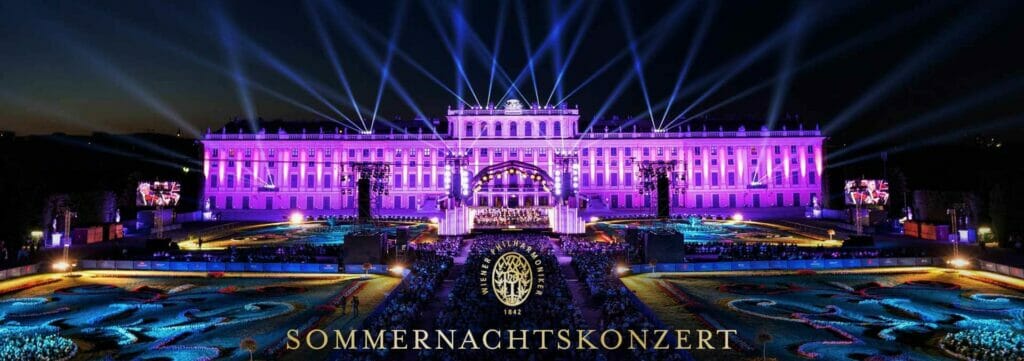
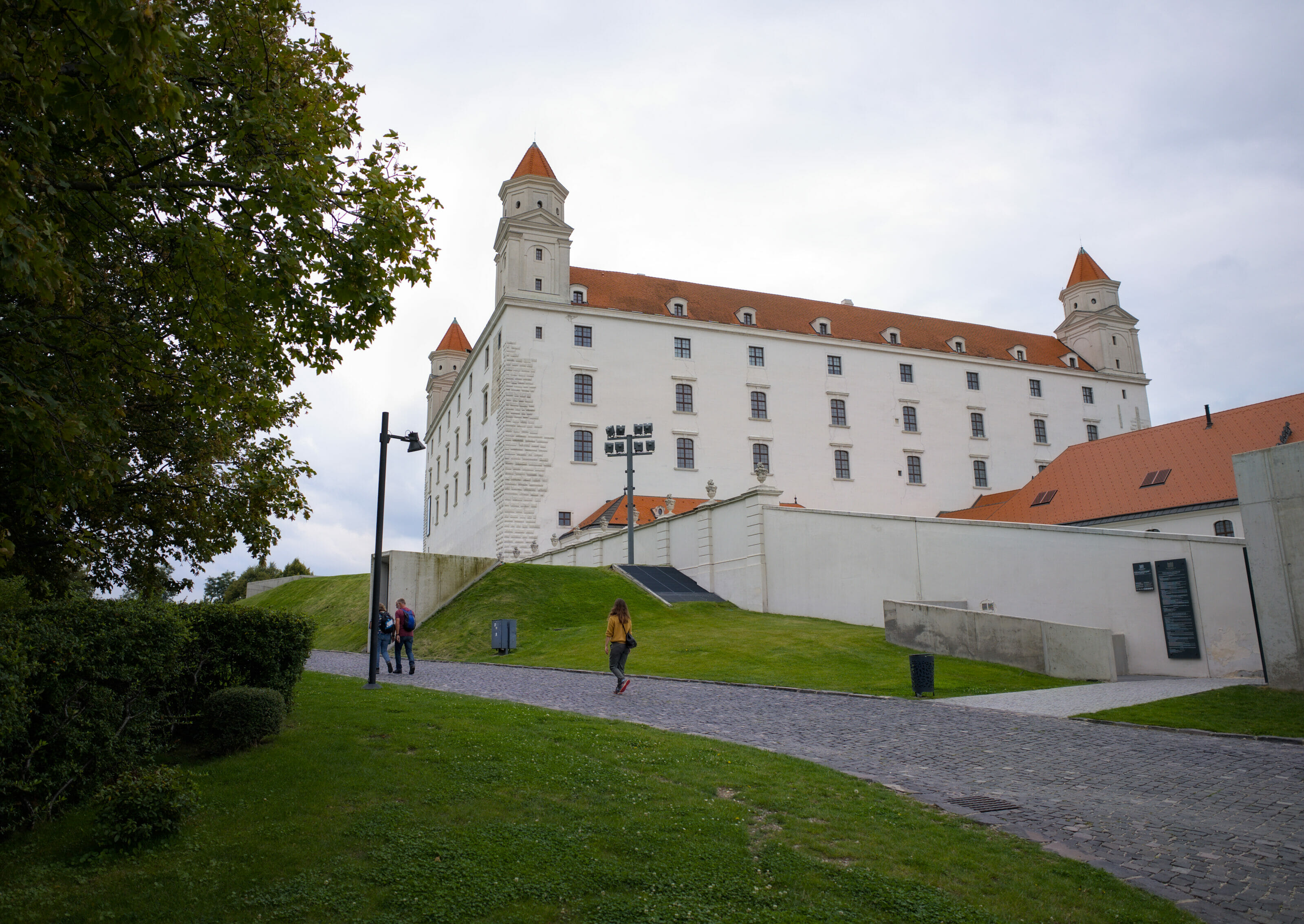
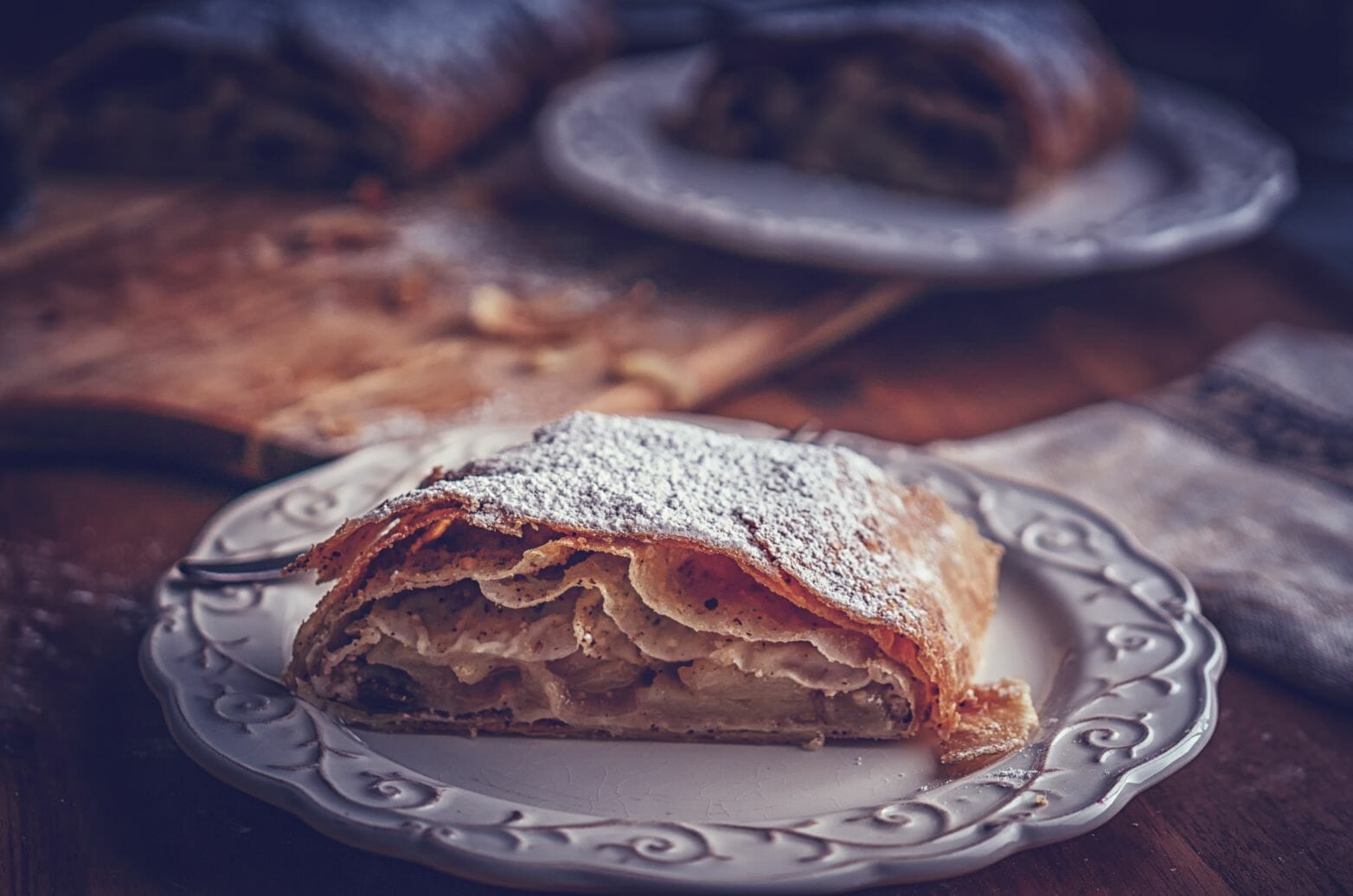
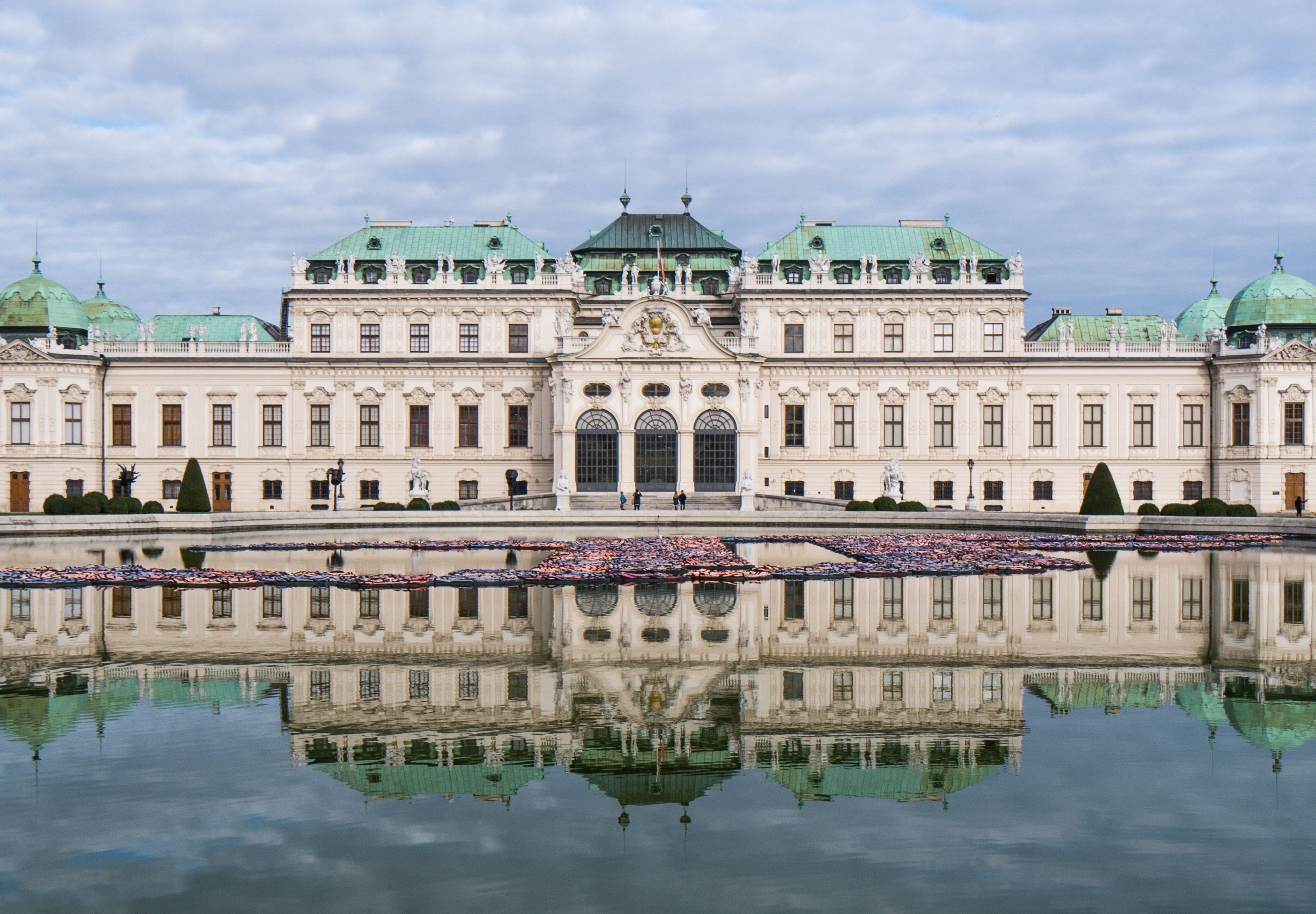
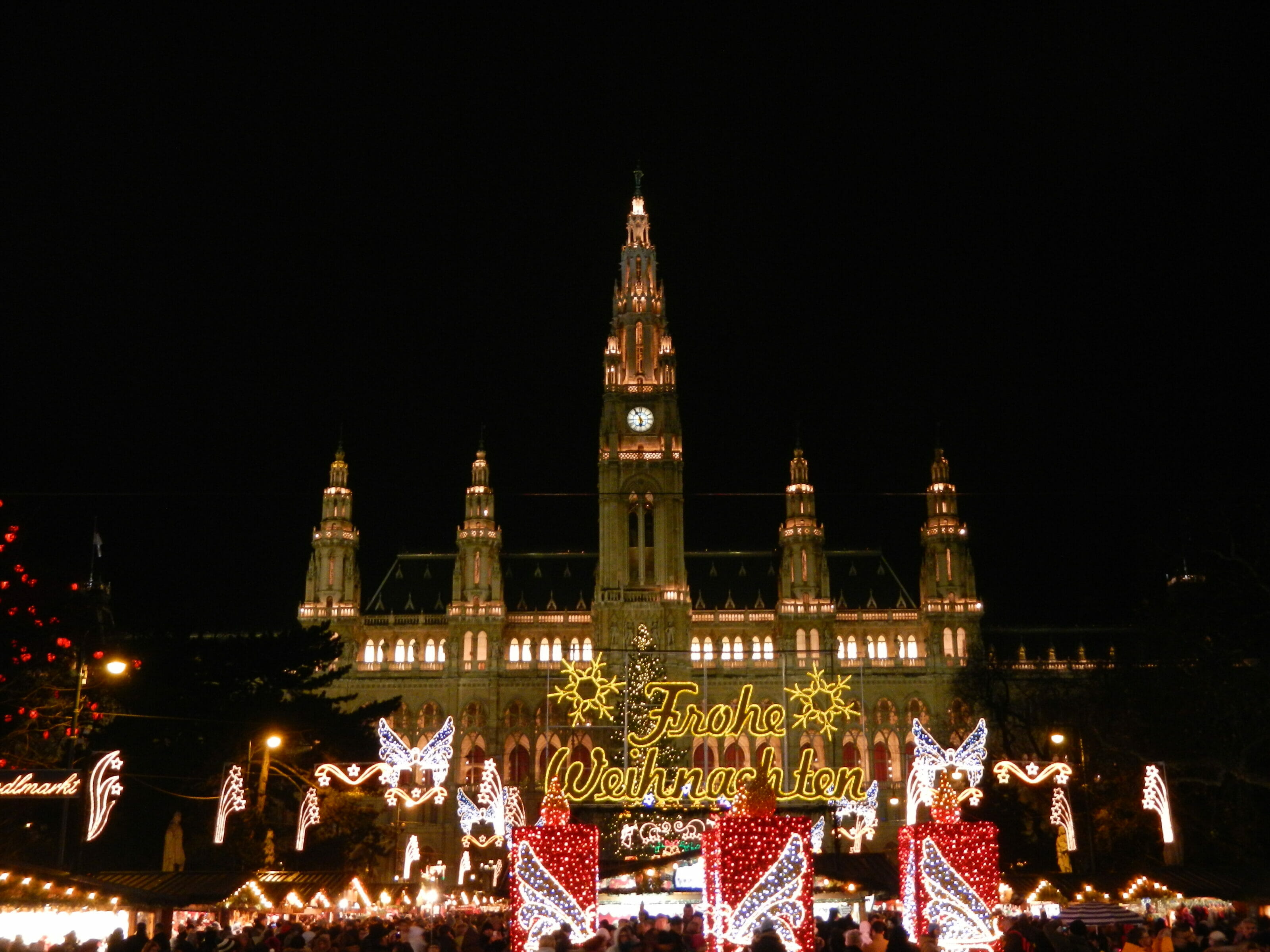
Join the discussion